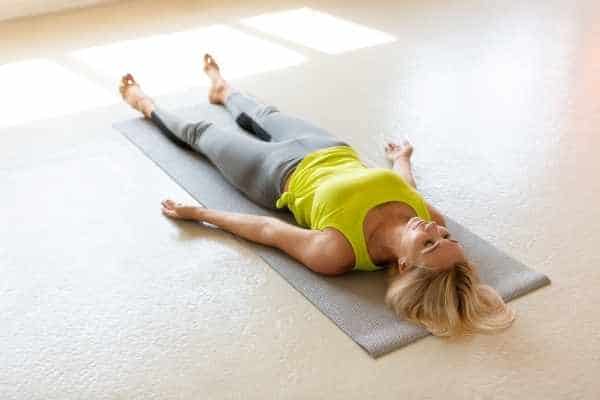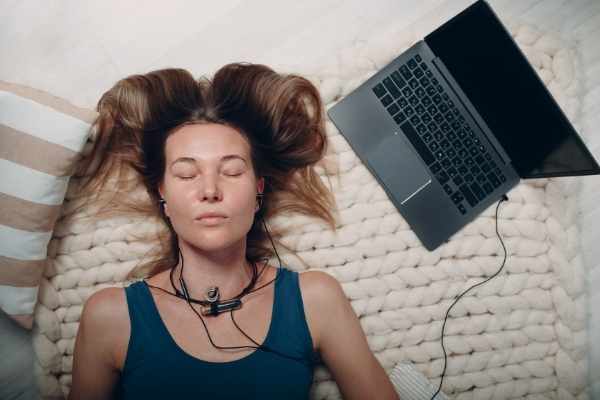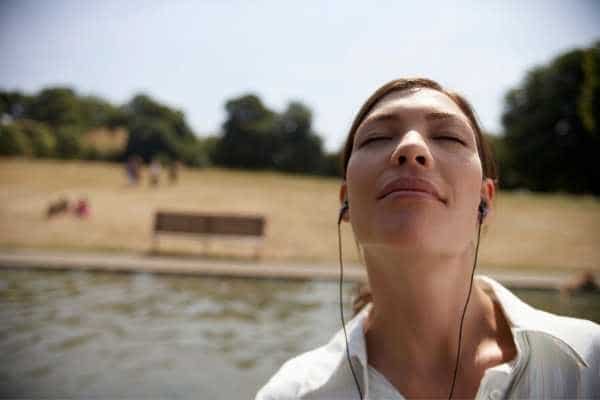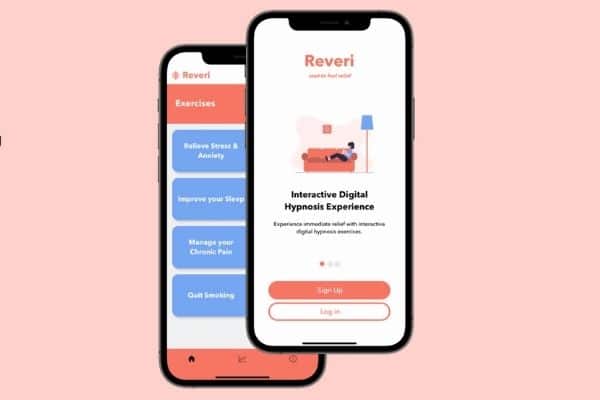Lately, I am obsessed with ‘Non-Sleep Deep Rest protocols’ and how they help to optimize your brain for relaxation and learning.
What are NSDR Protocols?
Non-Sleep Deep Rest (NSDR) are specific techniques to reach self-directed states of calm through mental focus. NSDR protocols can improve learning, help you relax, reduce stress, and help you fall asleep more easily.
The term NSDR was coined by Dr. Andrew Huberman. Through his podcast ‘The Huberman Lab’ he aims to teach science based approaches to improve lives.
Non-Sleep Deep Rest Protocols like Yoga Nidra or self-hypnosis can improve learning, help you relax, reduce stress, and also fall asleep more easily.
A short nap (20 minutes or less) will put you in a state of Non-Sleep Deep Rest.

Naps may be the easiest way to get into NSDR, but following a guided NSDR protocol will also involve a type of mental focus.
This means you learn much faster, and retain the new information much longer.
Dr. Huberman promotes two specific NSDR protocols: Yoga Nidra and self-guided hypnosis. Both guide you into a state of focus linked with relaxation.
Use the code VASTMIND to get 15% off your Momentous order
What is a Yoga Nidra NSDR Protocol?
Yoga Nidra means Yoga Sleep. A Yoga Nidra NSDR Protocol involves following a guided meditation (called a script) to enter a self-directed state of calm.
In a Yoga Nidra NSDR protocol you are lead by an instructor who reads involves a specific script that guides you through a body scan. Your focus is directed sequentially onto different parts of your body.
Yoga Nidra is a very easy, you basically lie down on a yoga mat and are lead through the meditation.
Yoga Nidra is is a great choice for a beginner meditator. When I first started meditating, I really could only meditate while lying down.

Practicing Yoga Nidra helps you enter the deepest, non-REM delta wave sleep while maintaining awareness both internally and of one’s surroundings.
Yoga Nidra Script: 20 Minute Guided Meditation
There are a couple of great free YouTube options if you would like to try Yoga Nidra.
In this YouTube video, recommended by Dr. Huberman, Lizzi Hill guides you ‘total awareness of your body in perfect stillness and relaxation’.
With an absolutely soothing tone of voice she instructs you to close your eyes, and remain still. ‘Notice the area, feel the area, relax the area’ she says as she guides you through a body scan.

I’ve used this guided meditation a few times now. I listen using headphones while I am trying to fall asleep (and my husband has already fallen asleep).
It is possibly the most relaxing and effective body scan I have experienced. It definitely helps me fall asleep.
Another option is this Getmadefor 20 Minute Yoga Nidra protocol, this time with a soothing male voice.
Yoga Nidra Script: 10 Minute Guided Meditation
Only have time for 10 minutes of Yoga Nidra? No problem, Getmadefor has you covered with this 10 Minute Yoga Nidra Protocol!
Why make time for Yoga Nidra? When following a Yoga Nidra protocol you obviously benefit from the very deep relaxation during the session.

But the interesting thing is that your brain is learning the skill of how to enter these deep states of meditation.
This is not something most of us know how to do, especially those of us who have trouble ‘turning off our brains’ at night.
By practicing Yoga Nidra regularly, you will learn how to enter these relaxed states. This becomes a skill you can fall back on when you are trying to fall asleep, even without the guidance.

NSDR Self-Hypnosis Protocols
If you only know hypnosis through stage hypnosis, you might think of hypnosis as a form of manipulation or mind control.
But…. this is a complete misunderstanding of hypnosis.

Hypnosis as therapy is completely different from stage hypnosis. Hypnotherapy is a very effective and is a safe treatment for many issues.
Hypnosis has been studied extensively by Dr. David Spiegle, the Medical Director of the Center for Integrative Medicine at Stanford School of Medicine.
Dr. Spiegle is no quack, he is a respected psychiatrist, with over 40 years of experience.

Dr. Huberman says he often does a NSDR self-hypnosis protocol in the early afternoon.
And I’m a big believer in specifically self-hypnosis…which is a tool that you can access at any time… any place… to create profound changes in your state of being.
You can specifically and consciously target habits you want to change, you can modulate pain in your body…there are so many ways to utilize this powerful tool that we discuss.
Dr. Andrew Huberman on the Tim Ferris podcast
NSDR Self or Autohypnosis: Yes, It Works!
What is hypnosis? The state of hypnosis brings about a state of focused attention, and a lack of self-consciousness.
During hypnosis you actually have greater control over your emotions and body sensations.
Self-hypnosis helps leverage the mind-body relationship. This has been proven to help people manage conditions such as stress, pain, and insomnia.

During hypnosis, there is a heightened connection between the frontal regions of the brain and the deeper regions that process primary experiences. This is a network in the brain that is involved in monitoring the body and emotions.
With the increased mind-body control in a hypnotic state, sensations of pain and anxiety can be reduced.
Reveri App: Guided Hypnosis NSDR Protocol
To share hypnotherapy to a wide audience Dr. Spiegle has developed a self-hypnosis app called Reveri.
Reveri offers a number of interactive self-hypnosis exercises to:
- Relieve Stress and Anxiety
- Improve Sleep
- Manage Chronic Pain
- Quit Smoking
Reveri’s self-hypnosis exercises are really easy to do, and only take 8-12 minutes each. Dr. Speigle himself guides you through the exercises (with a very hypnotic voice!).

Learn NSDR Self-Hypnosis (Hypnosis Script)
When using the Reveri app, during the self-hypnosis exercises you will feel:
- heightened awareness of the sensations in your body
- reduced distraction by anxious or intruding thoughts
- less rumination and mind wandering and your mind can feel less ‘crowded.’
And just like regularly practicing Yoga Nidra, regularly practicing self-hypnosis means you learn skills you can draw upon when needed.
And don’t worry, you really do remain in control under Reveri guided self-hypnosis. Each exercise starts with an explanation of self hypnosis and what the goal of the exercise will be.

In the ‘Relieve Stress & Anxiety’ Dr Spiegle guides into a self-hypnotic state and then to consider a problem you are facing.
He helps you to consider new strategies to reduce your anxiety and realize that your body can be comfortable despite the stress and uncertainty you feel.
You are guided to relax your body and then through a problem solving exercise to help you face uncertainty.
Dr. Spiegle give you ways to deal with stress, including the suggestion to ‘make a plan that is good enough and cannot be perfect’.

I admit, the whole thing sounds pretty odd, and I felt silly using the app the first few times. But amazingly, it really seems to help.
During a stressful situation, I actually heard Dr. Speigle’s voice and just as he suggested I ‘made a plan that was good enough’.

Best NSDR Protocol Review
Non-Sleep Deep Rest Protocols are easy to incorporate into your day. And it is really worth it as the benefits of NSDR Protocols are immediate but increase when you make them a daily habit.
With a Non-Sleep Deep Rest Protocol you’ll feel immediate relaxation. But NSDR Protocols are also proven to improve learning, help with insomnia, reduce anxiety and even help with chronic pain.
Want more info on Dr. Andrew Huberman protocols?
Check out my post on The Huberman Lab Approved Supplements for Brain Health the Huberman Lab recommended ‘Sleep Cocktail’ or The Galpin Equation.
And here is a list of Dr. Huberman recommended books.
Basically making a habit of a daily NSDR Protocol will help you optimize your brain.

According to Dr. Huberman, the top NSDR Protocols are Yoga Nidra and self-hypnosis.
Options for free guided Yoga Nidra meditations are here:
The self-hypnosis Reveri app is here:
I have found Yoga Nidra extraodinarily helpful for insomnia, I often fall asleep listening to Lizzi Hill’s voice in my headphones. You can read more about my experience with the Reveri app which has helped my anxiety.
Go ahead and give one of these Non-Sleep Deep Rest Protocols a try.
References:
- Huberman Lab Podcast #8: OPTIMIZE YOUR LEARNING & CREATIVITY WITH SCIENCE-BASED TOOLS.
- Training attention for conscious non-REM sleep: The yogic practice of yoga-nidrā and its implications for neuroscience research
- Brain Activity and Functional Connectivity Associated with Hypnosis
- The Tim Ferriss Show: Dr. Andrew Huberman — A Neurobiologist on Optimizing Sleep, Performance, and Testosterone (#521)


